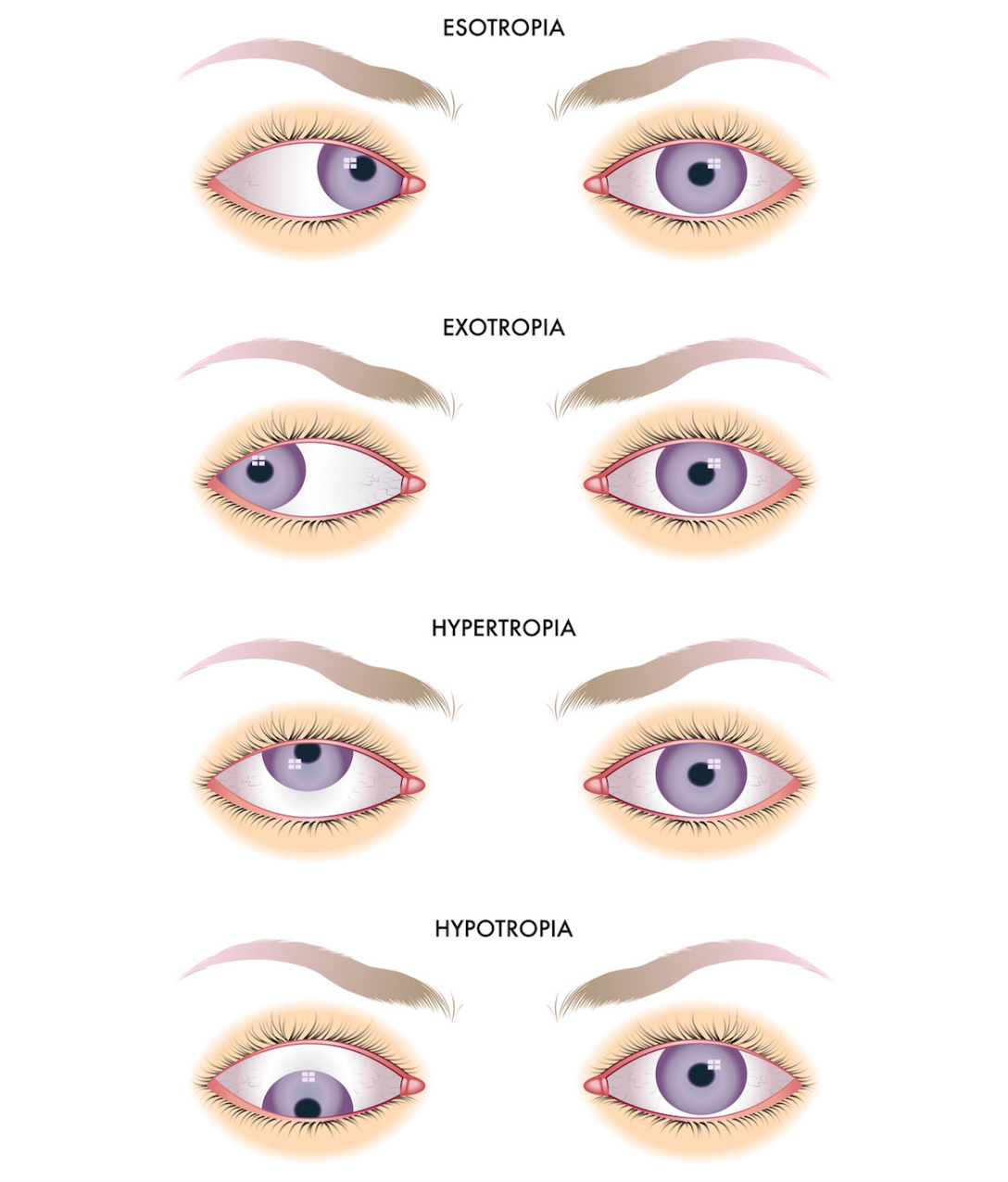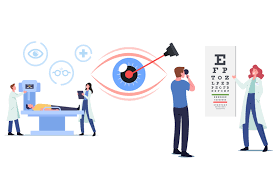A squint eye, also known as strabismus, can develop at any age and has various causes. Here’s an explanation of what can lead to a squint eye:
Causes of Squint Eye:
1-Muscle Imbalance: A common cause of squint is an imbalance in the muscles that control eye movement. If one eye’s muscles are weaker or stronger than the other, it can result in the eye turning inwards, outwards, upwards, or downwards.
2-Heredity: Family history can play a role in the development of a squint. If a parent or sibling has a squint, there’s an increased risk for other family members.
3-Refractive Errors: Uncorrected refractive errors like nearsightedness (myopia), farsightedness (hyperopia), or astigmatism can lead to a squint. The affected eye may turn to avoid double vision.
4-Medical Conditions: Certain medical conditions, such as cerebral palsy, Down syndrome, and brain tumors, can be associated with strabismus.
5-Amblyopia (Lazy Eye): Amblyopia can result from an untreated squint. The brain may start to ignore the misaligned eye, causing it to become “lazy.”
6-Neurological Issues: Damage or disorders in the brain or cranial nerves that control eye movement can cause strabismus.
7-External Factors: In some cases, factors like trauma, head injuries, or eye injuries can lead to a squint.
Development at Any Age: Strabismus can develop at any age, from infancy to adulthood. In children, it often becomes noticeable in the first few years of life. Adult-onset strabismus can occur due to various factors, including medical conditions, head injuries, or the progression of uncorrected childhood strabismus.
Early diagnosis and treatment are essential for individuals of all ages to manage a squint eye effectively. A comprehensive eye examination by an eye specialist or ophthalmologist can determine the cause and appropriate treatment options.
For more information, consult Dr. Sonia Maheshwari Kothari one of the Best Eye Specialist in Ghatkopar or you can contact us on 8097809788.




